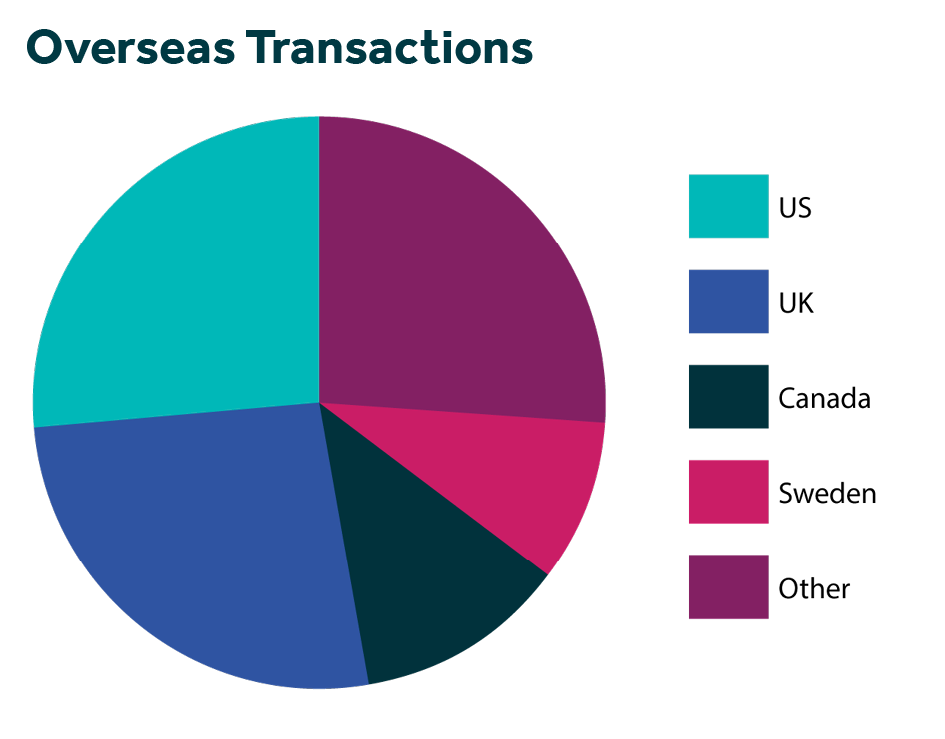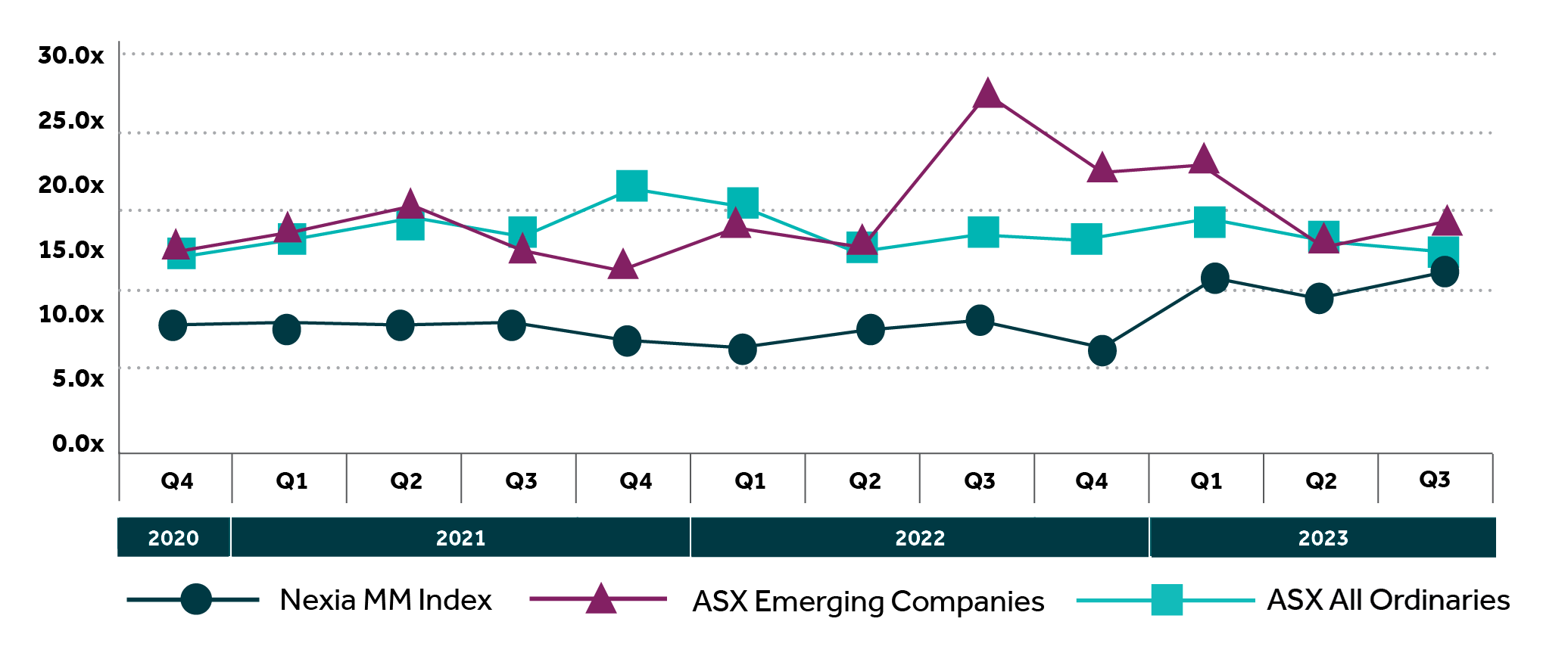We are happy to present the quarterly instalment of our mid-market M&A overview. The analysis focuses on the current quarter intending to provide you with a brief overview of recent mid-market M&A activity.
Overview
The number of transactions in Q3 FY2023 decreased from the previous quarter and decreased slightly from the same quarter in the prior year.
The average deal size increased from $27.2 million in Q2 FY2023 to $30.3 million in Q3 FY2023, an increase of 11.4%. Over the last 12 months, the average deal size was down from $29.9 million to $29.6 million, a decrease of 1.0%.
Number of transactions and disclosed average transaction value by quarter
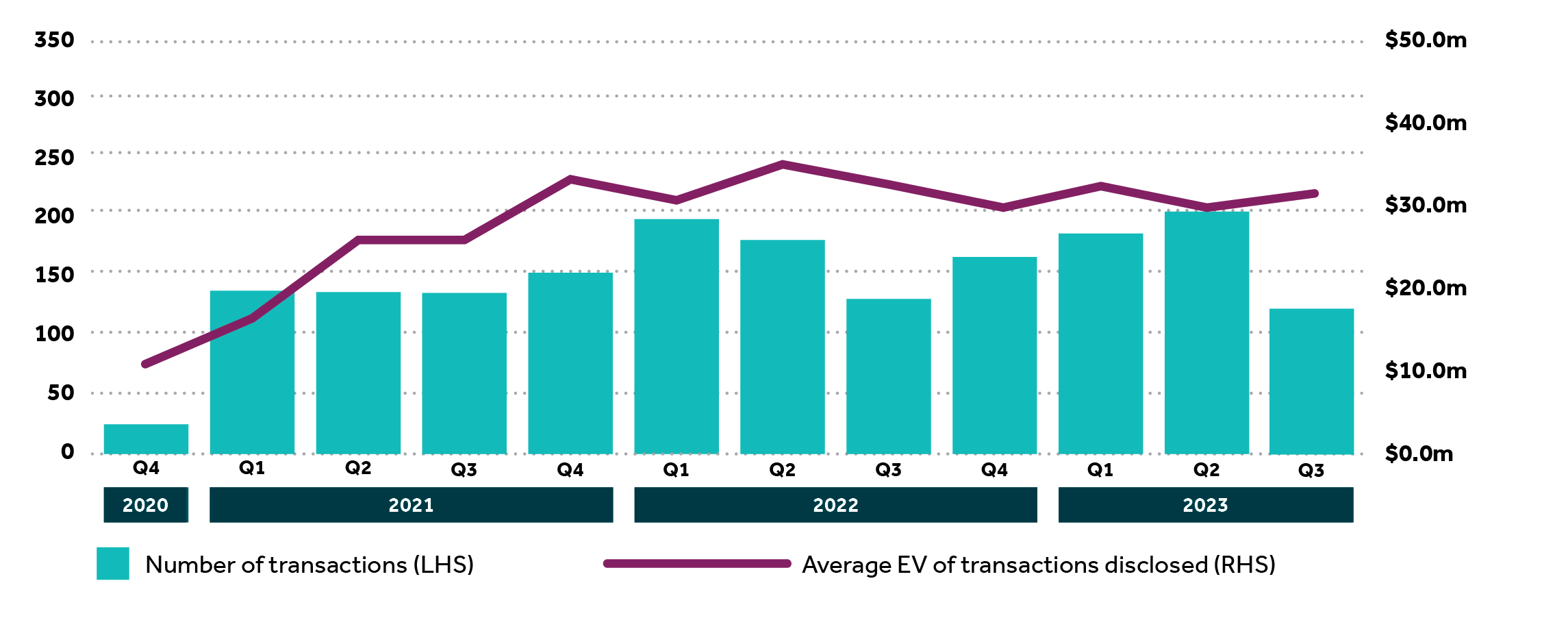
Sector
Industrials (23%), information technology (23%) and consumer discretionary (14%) were the most active sectors during the quarter, followed by financials (11%) and communication services (7%). Combined, the top 5 sectors represented 78% of all transactions completed in the quarter.
M&A activity in the industrials sector continued to be strong despite a decrease from Q2 FY2023, from 46 transactions to 28 in this quarter. There was also significant M&A activity in the IT sector (28 transactions), representing a 22% increase from the previous quarter.
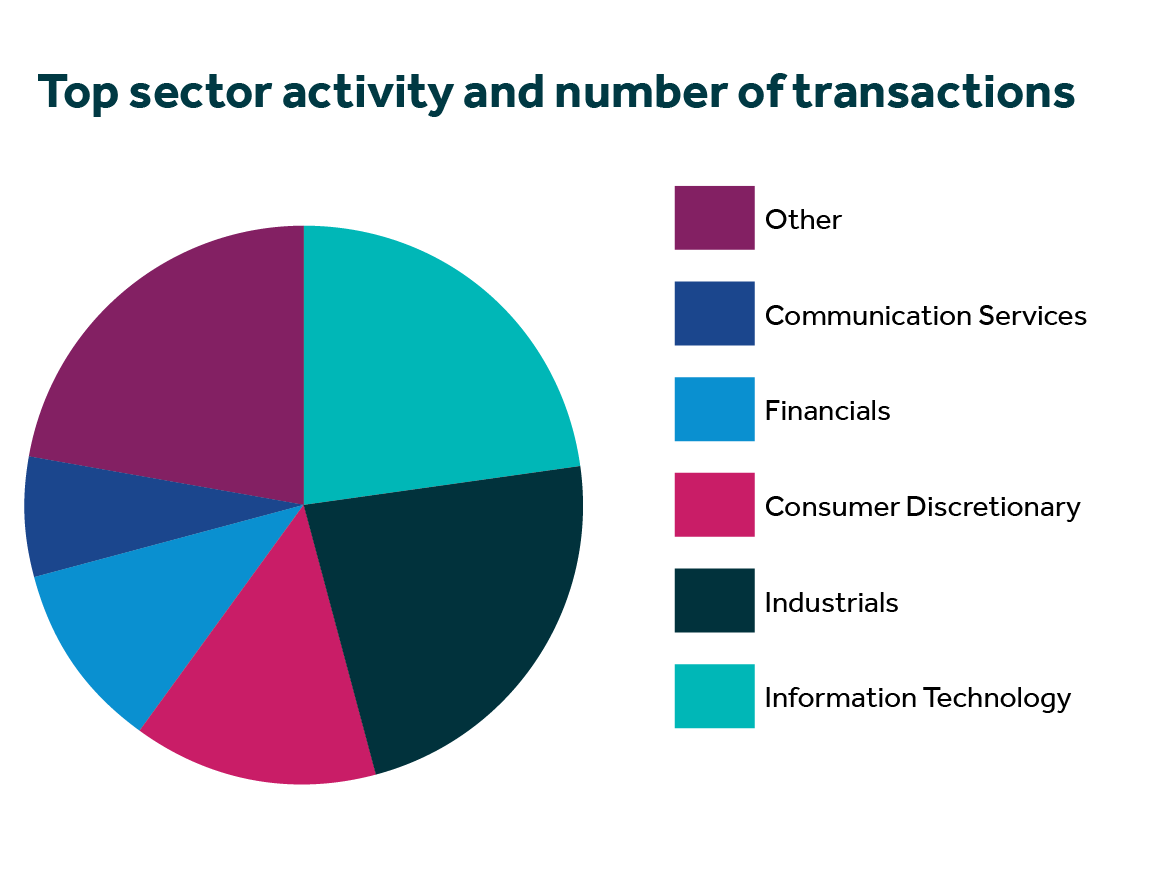
Geography
For transactions where a buyer was disclosed, overseas acquirers represented 29% of total transactions. The United States and the United Kingdom were the largest acquirers of Australian companies both representing 7% of total acquisitions in the quarter. Canada also actively acquired Australian companies, representing 3% of the total transactions.
The below graph represents the country split of the overseas transactions throughout the quarter, excluding Australian acquirers.
EBITDA multiples
The EBITDA multiples of the Nexia MM Index (see below regarding methodology and limitations) has been compared to relative ASX indices in the graph.
The Nexia MM Index compared to relative ASX listed companies
The ASX Emerging Companies index increased by 1% and the ASX All Ordinaries index decreased by 14% from the prior quarter. The Nexia MM increased by 24% in the current quarter.
One transaction can have a significant impact on the Nexia MM Index. To provide more insight into the Nexia MM Index, we have highlighted the EBITDA and capitalisation multiple of some of the transactions.
Although the same limitations apply to this analysis as the overall index, the study bears the relationship between multiples and size with lower EBITDA generating companies also receiving a lower multiple. It also provides an insight into the relative sector multiples.
Snapshot of EBITDAx distribution by sector
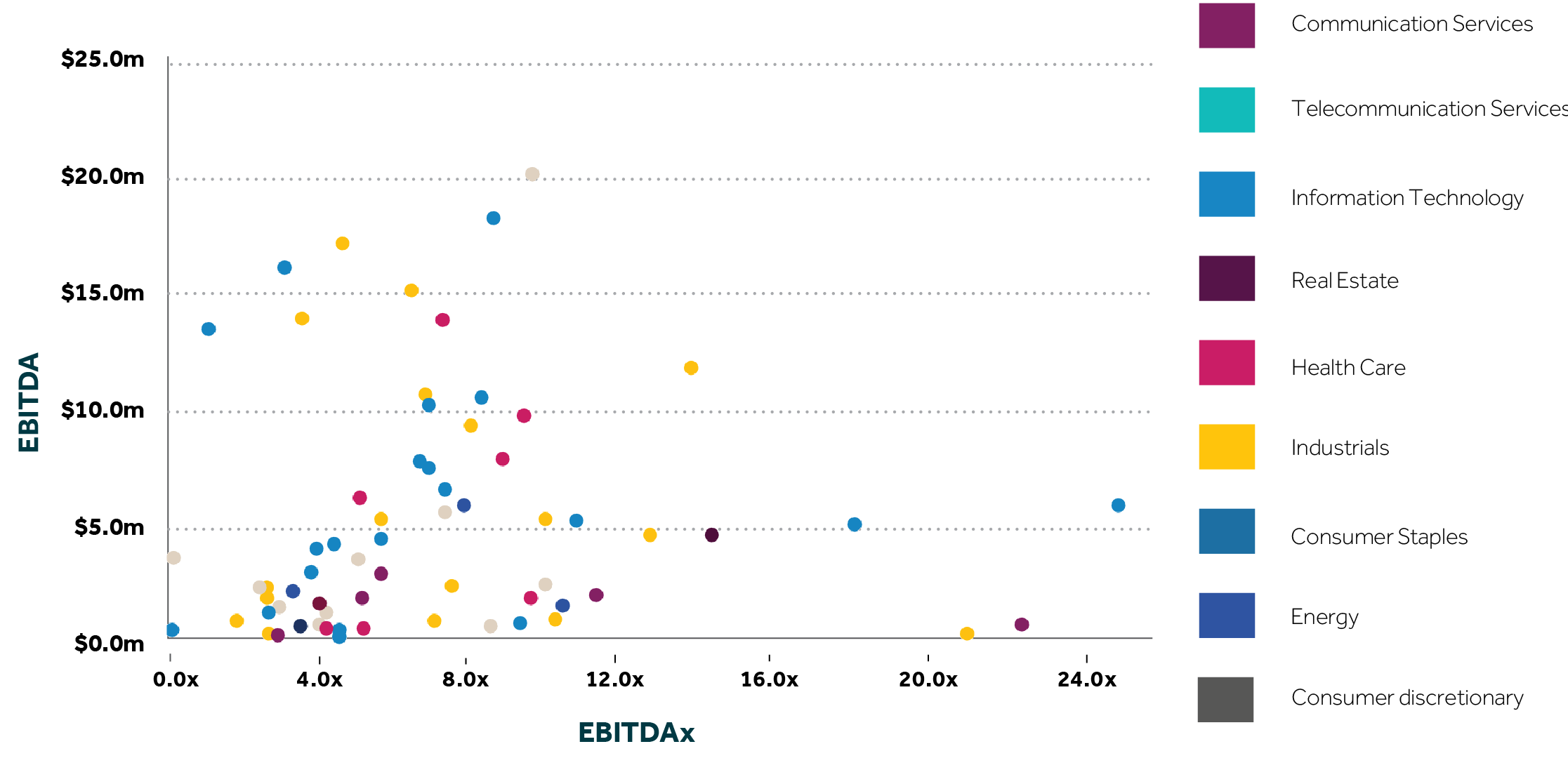
Methodology
The analysis was prepared based on data sourced from S&P Capital IQ at the end of each quarter. Our data set has not been updated for transactions that may be added to S&P Capital IQ retrospectively as data becomes available. Data analysed is for completed transactions, with a primary geographic location in Australia and an implied enterprise value of less than $200 million from 1 April 2020 to 31 March 2023. Transactions, where no value was disclosed, are included in the volume data with the implicit assumption that these would relate to smaller transactions and therefore meet the criteria.
Overall, 1,753 transactions are included within the data analysed. Transaction values were disclosed for 720 (41%) of these transactions with an aggregated transaction value of $20.0 billion. 68 of these transactions (9%) had sufficient data disclosed to calculate the EBITDA multiples.
In respect of our methodology, we note that this is a simple analysis to give an overview of the market and potential movements. It should in no way be seen as a substitute for a rigorous review of any potential opportunity that you may be considering, and you should seek appropriate professional advice for your circumstances.
We note that the source data is limited by the amount of information that is made public and captured in the S&P Capital IQ database. The calculations we have performed due to the limited number of data points in respect of EBITDA multiples, can be heavily influenced by a single transaction which reflects that transaction’s particular circumstances rather than a reflection of the market as a whole.
Analysis of all transactions, including sector and buyer location is based on S&P Capital IQ classifications.
About the Nexia MM Index
The Nexia mid-market EBITDA multiple (Nexia MM Index) analysis is a simple analysis of EBITDA for acquisitions of unlisted mid-market companies where the data is reported. It is indicative of a trend in the overall market rather than implying the multiple that should be considered for a particular company. The Nexia MM is limited by several factors, including that there are a small number of transactions in Australia where the data is available. As a result, the average EBITDA multiple can be significantly influenced by individual transactions where the specific characteristics of the transaction may have resulted in a higher or lower multiple than would otherwise be achieved. To minimise the impact, we have shown a rolling annual EBITDA multiple for disclosed transactions above.
Considering the data against the listed company comparative, the Nexia MM is based on acquisitions and therefore implicitly reflects a control premium whereas the multiple for the listed companies reflects a portfolio interest.
The range in the identified EBITDA multiples is significant at 2.6x to 4.2x for FY2020, 2.5x to 22.0x for FY2021 and 0.2x to 37.8x for FY2022. The current range for FY2023 is 0.2x to 50.3x.

